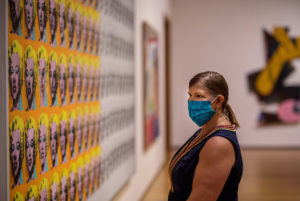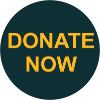|
Issue Two Reconnecting with Our Cherished Institutions: It is hard to grasp that it’s been almost five months since the pandemic forced the closing of museums worldwide. As they begin to reopen across the US, we will thankfully be able to visit our favorite cultural centers and enjoy art in person. During these past months, the art world has undergone a period of reflection and innovation around how our cherished institutions can extend their role and purpose as social gathering spaces for many diverse communities. We are delighted and grateful that Bill Griswold has taken a moment in this busiest of times to share his insights into some of the challenges, and opportunities, the Cleveland Museum of Art has faced on the road to reopening its doors last month—with free admission no less! Helen Lee-Warren |
William Griswold
Director of the Cleveland Museum of Art
PhD History of Art, 1988
 The Cleveland Museum of Art was one of the first major American museums to reopen after closing due to the pandemic. What has that been like, and how have things gone so far?
The Cleveland Museum of Art was one of the first major American museums to reopen after closing due to the pandemic. What has that been like, and how have things gone so far?
It’s been a wild ride. When we closed, overnight, in March, we had no work-at-home policy and very limited experience with Zoom and Teams. The museum had almost to reinvent itself, accomplishing its educational mission online, rather than on site. When finally we reopened on June 30, it was anything but business as usual. The Cleveland Museum of Art continues to offer free general admission, but visitors must now secure timed tickets; we’ve dramatically reduced the number of people whom we permit to enter, to allow for social distancing; temperatures are scanned when one comes through the door; and everyone must wear a mask. We were concerned that people might be put off by these precautions, but that hasn’t been the case. And we’re gratified to provide a place where neighbors from throughout Northeast Ohio can find solace – even entertainment – in the midst of the many challenges with which our country and our world are grappling.
Aside from the new safety protocols, what impact has the pandemic had on your program and the visitor experience?
A lot. We’ve had to move our educational and public programs online, and Covid-19 has upended our exhibition schedule,  precluding many works of art from traveling. We’ve responded by extending all the exhibitions that were on view when we closed – notably PROOF: Photography in the Era of the Contact Sheet, an amazing show that merits many visits – and we have re-emphasized our permanent collection. Moreover, just before we closed, we announced the largest gift of art to the museum in more than sixty years: over 100 works, from Joseph and Nancy Keithley. Their donation comprises paintings by Pierre Bonnard, Gustave Caillebotte, Maurice Denis, Henri Matisse, Pablo Picasso, Camille Pissarro, and Félix Valloton – to name only a few – as well as many works in other media. We installed a significant selection in conjunction with our reopening. In addition, we completed a dramatic reinstallation of our British Galleries during the period we were closed, ensuring that there would be plenty – and plenty that was new – for returning visitors to see. To wander through our galleries now is really special: with fewer visitors than ordinarily would be the case, one is able to explore and commune with the collection as almost never before.
precluding many works of art from traveling. We’ve responded by extending all the exhibitions that were on view when we closed – notably PROOF: Photography in the Era of the Contact Sheet, an amazing show that merits many visits – and we have re-emphasized our permanent collection. Moreover, just before we closed, we announced the largest gift of art to the museum in more than sixty years: over 100 works, from Joseph and Nancy Keithley. Their donation comprises paintings by Pierre Bonnard, Gustave Caillebotte, Maurice Denis, Henri Matisse, Pablo Picasso, Camille Pissarro, and Félix Valloton – to name only a few – as well as many works in other media. We installed a significant selection in conjunction with our reopening. In addition, we completed a dramatic reinstallation of our British Galleries during the period we were closed, ensuring that there would be plenty – and plenty that was new – for returning visitors to see. To wander through our galleries now is really special: with fewer visitors than ordinarily would be the case, one is able to explore and commune with the collection as almost never before.

What has been the most rewarding part of re-engaging the community during this period?
I wasn’t sure that our community was ready to re-engage with us, after everything it had been through. But on Day One, we were sold out, and we had extensive coverage in the press – good news having been so hard to come by in the previous months. Seeing and talking with our visitors in the galleries has been incredibly exciting. People seem genuinely thrilled to be at the museum, and to make a beeline for their favorite works. Museumgoers of long standing are seeing the collection with fresh eyes and new enthusiasm. The experience, for me, has been to rediscover the capacity of art to connect us and to help us heal.
Are there any lessons you feel that you have learned? Are there things that will influence your future work as a museum director?
At this point in my career, I’m almost ashamed to confess how much I’ve learned over the past few months. I’ve become more patient – with my colleagues, but also with myself. Virtual meetings, conducted from one’s home, with pets and children in the background, paradoxically have made us closer. I’m more flexible; one has no choice. Most of all, perhaps, I’ve rediscovered the primacy of our collection. Museums have in recent years become so focused on programs and so fixated on big, temporary exhibitions that it’s all too easy to forget the great permanent collections that are the foundation – and the springboard – for all the other things we do.
If you could offer some advice to your younger self, when you were a Courtauld student, what would you say?
It is easy, as a student, to become narrowly focused – to lose sight of the bigger picture. That is, to a degree, the nature of academic research. Resist! The greatest joy of my career has been to discover new worlds through the great, beautiful, and curious objects that our museum and other institutions like it hold. I’m a proud Italianist. Nevertheless, I wish it hadn’t taken me so long to open my eyes to the art of ancient China, or English silver, or Maya sculpture, or 19th-century French oil sketches. I will be forever grateful that the Courtauld gave me the tools I’d need to do this on my own. And it’s something that means more to me now than ever.

Previous Postcards:
Deborah Swallow — Märit Rausing Director of The Courtauld
Bill Griswold — Director of the Cleveland Museum of Art
Jason Farago — Art Critic, The New York Times
Joachim Pissarro — Art Historian, Theoretician, and Director of the Hunter College Galleries
Sara Turner — US Department of Justice
Mary Rozell — UBS Art Collection



